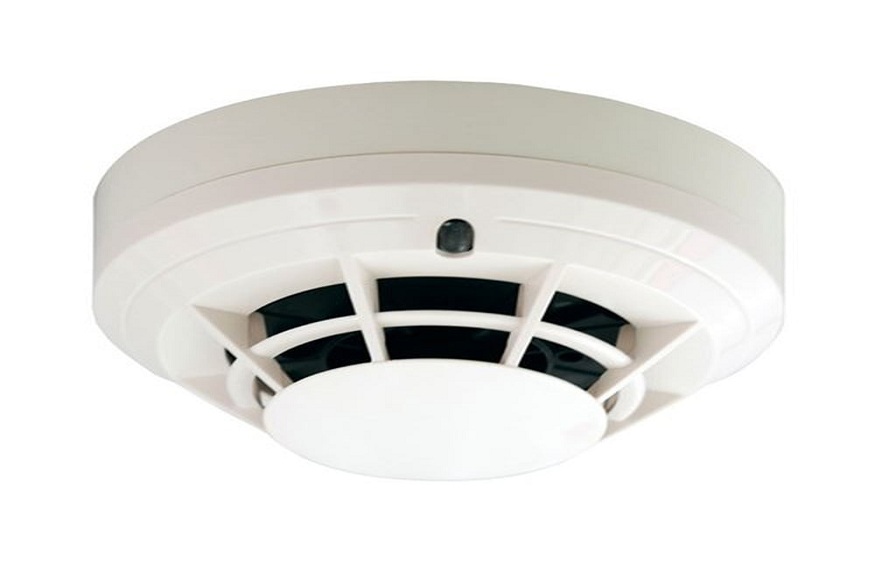In Australia, smoke alarms are a basic line of defence in fire safety, especially in homes and small buildings. But when it comes to large, open-plan areas like warehouses, schools, commercial buildings or sports halls, relying solely on standard smoke alarms can be a dangerous oversimplification. Understanding how smoke behaves in larger spaces—and how detection systems should be adapted—can make all the difference in early warning and occupant safety.
Why Larger Spaces Pose Unique Challenges
Smoke doesn’t rise and spread the same way in every environment. In confined rooms, smoke accumulates quickly near the ceiling, triggering alarms in a matter of seconds. But in larger spaces, especially those with high ceilings or poor ventilation, smoke can take longer to reach detection height. In some cases, it may disperse or stratify before an alarm is ever activated.
Temperature differences can also delay detection. In a warehouse with a ceiling 10 metres high, for instance, smoke from a fire on the floor might not be hot enough to rise all the way up, which means the sensors near the ceiling won’t catch it in time. That’s a serious concern when people’s lives and millions of dollars in inventory are on the line.
Standard Smoke Alarms: What They Can and Can’t Do
Domestic smoke alarms, such as those commonly found in homes, are not designed to handle the scale and complexity of large buildings. Most use ionisation or photoelectric technology to detect smoke particles, but their performance diminishes in spacious environments with variable air currents.
Even high-quality models, like a PSA smoke alarm wholesale unit, are engineered with specific settings in mind. While they’re excellent for rooms and small offices, the same devices may fall short when deployed in an aircraft hangar or shopping centre.
This is where many building managers get it wrong—they assume installing more standard alarms solves the problem. But quantity isn’t a substitute for suitability. Without a tailored approach, adding more alarms could still lead to blind spots.
The Importance of System Design
To address the limitations of conventional alarms in large spaces, fire detection systems need to be designed with spatial and environmental variables in mind. This includes considering airflow, ceiling height, possible obstructions, and occupancy patterns. In many cases, integrating multiple types of detectors—heat, flame, optical beam, or aspirating systems—can offer better protection.
For example, aspirating smoke detectors continuously draw air samples through a network of pipes, detecting minute smoke particles before they are visible. These systems are more sensitive and responsive, making them suitable for critical areas like server rooms, archives, and large logistics centres.
Meanwhile, linear beam detectors are effective in open areas such as stadiums or school gyms, where smoke may take longer to concentrate. They work by sending an infrared beam across a space and monitoring any reduction in signal caused by smoke.
Regulatory Standards and Compliance
Australian fire safety regulations are clear about minimum standards, but not all buildings are subject to the same rules. New constructions must meet the requirements of the National Construction Code (NCC), while older buildings may follow legacy systems. In many cases, businesses only upgrade their fire detection systems after an incident—or after failing an inspection.
Proactive design is key. Consulting a qualified fire safety engineer during the planning or retrofit stage is often the best way to ensure compliance and comprehensive coverage.
When sourcing alarms or components in bulk, such as through psa smoke alarm wholesale near me suppliers, it’s important to verify whether the models meet the fire detection needs of your specific space. Always match the device to the function—not just the budget.
Supplementing Alarms with Visual Emergency Guidance
Detection is just one part of the fire safety puzzle. Once an alarm goes off, occupants need to exit quickly and safely. That’s where emergency lighting and signage play a vital role.
In sprawling facilities, disorientation can cause delays. Well-positioned emergency lights and exit signs help guide people through complex layouts, especially in smoke-filled or dark conditions.
Buying from a trusted emergency light wholesale supplier ensures the units are compliant with AS/NZS 2293 standards and suitable for large installations. Products like photoluminescent or LED signs with battery backup can function during power failures, helping people find their way out even under extreme stress.
Similarly, partnering with an exit light wholesale distributor who understands the demands of large spaces allows building managers to source lights with the right visibility range, brightness, and runtime.
Final Thoughts
Standard smoke alarms serve a vital purpose, but they’re not always fit for the complexity of large-scale spaces. Whether it’s a shopping centre, industrial facility or educational institution, a custom fire detection strategy is essential.
Effective fire safety isn’t about ticking a box—it’s about thoughtful design, regular maintenance, and using the right tools for the job. From aspirating systems to compliant emergency lights, each component must work together to provide a reliable safety net.
Taking shortcuts in design or relying too heavily on generic solutions can lead to catastrophic delays in detection and evacuation. And when the cost of failure is measured in lives and livelihoods, that’s a risk no facility should take.

